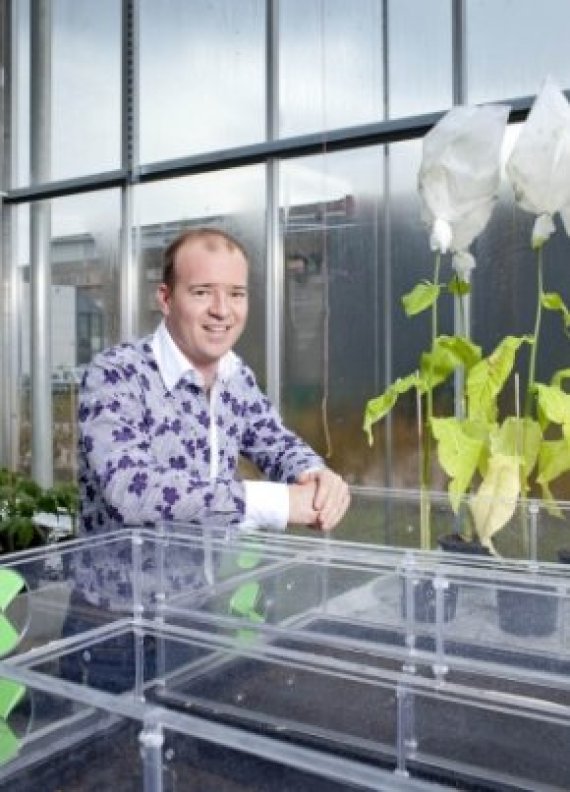Plant researcher Bart Thomma is to receive a Vici grant worth 1.5 million euros from the Netherlands Organization for Scientific Research (NWO) for his research on pathogenic fungi. ‘I’m extremely happy’, says Thomma, assistant professor of Phytopathologist, in response to the news. ‘A sum like this makes it possible for me to take this research a stage further.’ Thomma’s award-winning project builds upon a discovery made in 2010, when Thomma proved that a fungus which infects tomato plants makes use of camouflage. The fungus’s cell walls are made of chitin, a substance which is not found in plants and therefore activates their immune systems. To prevent this, the fungus covers its cell walls with proteins it produces itself. Meanwhile, Thomma has learnt that this mechanism is not unique, but is common to many fungi, including those which can make humans and animals sick. His project examines which role the protein plays in other pairs of pathogenic fungus and host. In addition, Thomma is curious to know whether fungal diseases can be combated in this way. It will therefore be imperative that the project work in a multidisciplinary fashion with other disciplines such as medical mycology. He also think there may be another complex mechanism at work. Thomma: ‘The fungus has to defend itself too against pathogens; another reason for making itself invisible could be to escape its enemies.’ Thanks to the Vici grant, Thomma thinks he will be able to find out more in the coming years. It has become harder to get hold of a Vici grant in recent years. This year, NWO has awarded grants to only 31 out of the 236 scientists who applied. In 2003, twenty percent of the proposals were selected.
Vici grant for camouflaged moulds
Plant researcher Bart Thomma is to receive a Vici grant worth 1.5 million euros from the Netherlands Organization for Scientific Research (NWO) for his research on pathogenic fungi.

